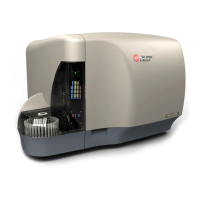
Do you have a question about the Beckman Coulter Navios and is the answer not in the manual?
| Type | Flow Cytometer |
|---|---|
| Software | Navios Software |
| Forward Scatter Detector | Photodiode |
| Side Scatter Detector | Photomultiplier tube (PMT) |
| Sample Flow Rate | Adjustable |
| Sorting Capability | No |
| Number of Parameters | Up to 12 |
| Laser Configuration | Up to 3 lasers |
| Data Acquisition Rate | Up to 35, 000 events per second |
| Applications | Immunophenotyping, Cell Cycle Analysis, DNA Analysis |
| Weight | 136 kg |
Defines WARNING and CAUTION alert meanings for hazard identification.
Explains safety symbols used in the manual and their meanings, such as Biohazard and CE mark.
Identifies and briefly describes the main components of the Navios Flow Cytometer system.
Details available hardware options like printers and additional PMTs for system configuration.
Lists recommended reagents, sheath fluid, cleaning agent, and quality control materials.
Guides users on inspecting instrument cartons for damage upon delivery and filing claims if necessary.
Outlines prerequisites for installation, including space, accessibility, and electrical input considerations.
Details the interunit connections for power, signal cables, waste, and pneumatic tubing.
Provides step-by-step instructions for installing the Navios software, including license agreement and folder selection.
Explains the process of sample loading, tube handling, and hydrodynamic focusing.
Details the methods for collecting forward scatter, side scatter, and fluorescent light signals.
Describes voltage pulse signals, peak signal, integral signal, and time-of-flight signal processing.
Explains parameters like TIME and RATIO, detailing their measurement and display.
Describes how sample analysis results are presented as graphs (plots) and the available plot types.
Explains how to create and assign regions for data analysis, gating, and autogating.
Provides detailed technical specifications for the instrument's components like dimensions, lasers, sensors, and workstation.
Outlines software features including data output, compatibility, reporting units, absolute count determination, and acquisition.
Quantifies particle and fluorescence carryover between specimens and provides measurement details.
Details the verified event rates for various parameters and the yield percentage measurement.
Discusses throughput based on variables like flow rate, data rate, and number of parameters collected.
Covers day-to-day and within-day variations in laser signal intensity for alignment verification.
Defines the intended use of the Navios system for qualitative and quantitative measurement for In Vitro Diagnostic use.
Identifies and explains the controls and indicators on the Navios Flow Cytometer and MCL.
Offers guidance on learning basic operational techniques, including MCL carousels and bar-code labels.
Lists essential keyboard shortcuts, drag-and-drop functions, and toolbar button functions for Navios software.
Guides users on creating new protocols, setting parameters, and defining plots, regions, and gates.
Explains how to create different types of regions (polygonal, rectangular, quadrant, linear) for data analysis.
Details the process of creating gates, including AutoGate, converting polygonal regions, and automatic gate creation.
Provides instructions and examples for creating and managing FlowPAGEs, including inserting elements and deleting objects.
Guides users on creating panels using the Panel Wizard, including defining panel details and protocol settings.
Explains how to create and manage worklists, including before and after creation steps, and drag-and-drop functionality.
Describes how to access and navigate the system help, including using the Contents, Index, and Search features.
Outlines the essential steps for starting up the Navios system, including checks and powering on components.
Details the procedure for powering off the computer and Cytometer, including turning off peripherals.
Explains how to put the Cytometer into idle mode for cleaning or reagent container tasks.
Provides instructions for leaving the instrument in shutdown state for extended periods, including cleaning.
Explains how to configure the system for automatic startup and shutdown of the Cytometer.
Guides on selecting and optimizing basic instrument configuration settings for reliable results.
Lists necessary QC materials for each quality control process.
Outlines the steps for performing daily quality control, including preparing samples and running wizards.
Explains how to use the scheduler to select applications for efficient setup and QC monitoring.
Guides through the automated application setup and QC monitoring process.
Describes defining applications, capturing instrument setup, lasers, parameters, and requirements.
Specifies the minimum sample volume, preparation, and concentration needed for analysis.
Lists essential checks and configurations to perform before initiating sample runs.
Details the procedure for running samples using the Multi-tube Carousel Loader in automatic mode.
Explains how to run samples using the MCL in manual mode, allowing tube location input.
Guides on running samples individually through the MCL tube access door.
Instructs on reviewing data displays, including light scatter, antibody staining, and gate/region boundaries.
Links to detailed procedures for creating protocols, regions, gates, flowpages, panels, and worklists.
Provides links to procedures for cleaning MCL sample head, replacing probes, tubing, and optical filters.
Details the process of signing on to the Navios software, including user administration and security settings.
Covers managing user profiles, workgroups, and system administrator settings.
Explains various operations within the File menu, such as creating protocols, saving files, and managing workspace preferences.
Describes common editing functions like Undo, Redo, Cut, Copy, Paste, and Paste Special.
Details how to manage views and toolbars, including Acquisition Manager, Resource Explorer, and plot arrangement.
Outlines the functions available in the Tools menu, such as publishing results, AutoMATOR, and listmode playback.
Explains different plot types and their customization options, including color dot plots, histograms, density plots, and prism plots.
Covers operations for analyzing data, including creating/modifying gates, regions, and color settings.
Guides on locating, preparing, cleaning, and reinstalling air filters for the instrument.
Explains how to put the Cytometer into idle mode for cleaning or reagent container tasks.
Details the process for removing reagent containers for cleaning or replacement.
Provides instructions for cleaning the internal sheath fluid container to prevent contamination.
Guides on cleaning the cleaning agent container, including preparing solutions and rinsing.
Details the procedure for cleaning the vacuum trap, including preparation and rinsing.
Explains how to power the Cytometer on or off independently of the computer.
Covers procedures for managing reagent containers, including capacity and replacement.
Details the steps for replacing the external sheath fluid container when the level is low or an error occurs.
Guides on filling the internal sheath fluid container, including preparation and cap handling.
Provides instructions for filling the cleaning agent container when a warning or error message appears.
Details the procedure for emptying the waste container, including safety precautions and disposal methods.
Explains when and how to replace the 0.2-μm sheath fluid filter.
Guides on replacing the sample probe and pickup tubing when issues like bending, leaks, or erratic flow occur.
Provides instructions for replacing the MCL sample head when cleaning fails or errors occur.
Details how to adjust system pressure if the gauge reading is outside the specified range.
Covers replacing optical filters due to loss of signal or application requirements, including dichroic and bandpass filters.
Outlines essential safety precautions related to laser radiation, electrical instrumentation, and hazardous substances.
Explains the location and meaning of CDRH-required warning labels concerning laser radiation exposure.
Refers to the Maintenance Log for cleaning and replacement schedules.
Details how and where Cytometer messages appear and how to access and clear them.
Lists common Navios software messages, their probable causes, and recommended actions.
Explains the meaning of level sense indicators like Sheath Low and Waste Full.
Provides troubleshooting steps for when the Cytometer Control window is not visible.
Lists the four bar-code symbologies used for specimen identification and the importance of accurate reading.
Provides guidelines on the correct placement of bar-code labels on tubes for accurate reading.
Covers label size, thickness, symbol dimensions, and print quality requirements.
Discusses factors affecting bar-code error rates and recommends best practices for accuracy.
Explains the function of the MCL bar-code decoder and character encoding.
Details how to use the Maintenance Log to record daily and periodic maintenance tasks.
Explains how to use the Service Log to record noted service conditions and actions taken.

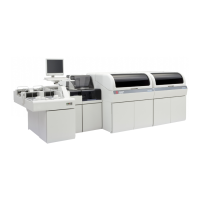
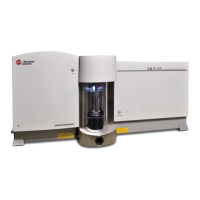
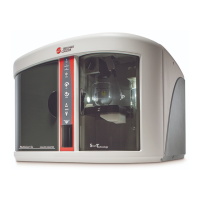

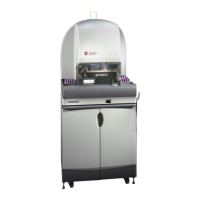

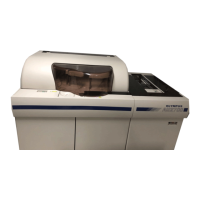
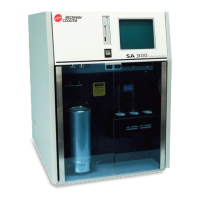
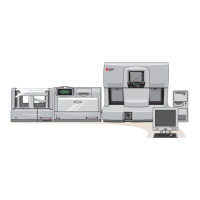
